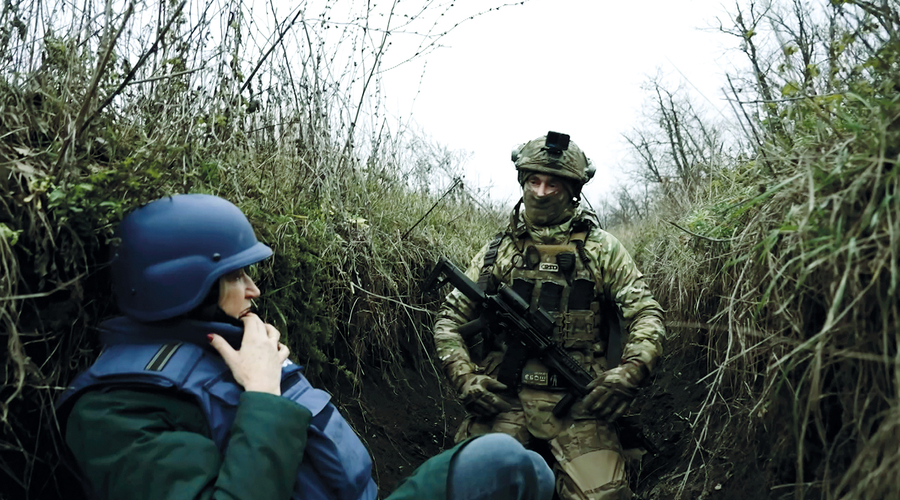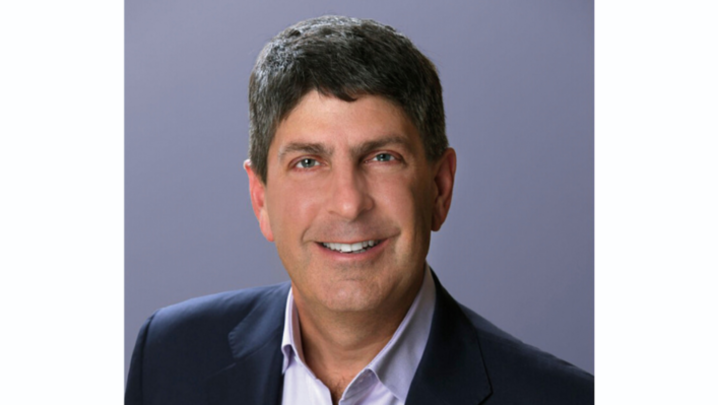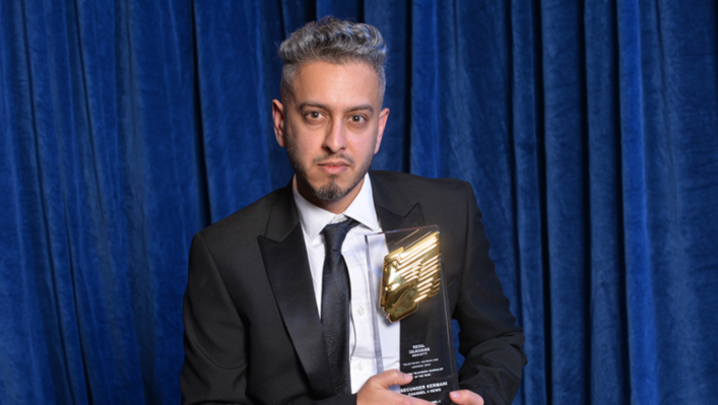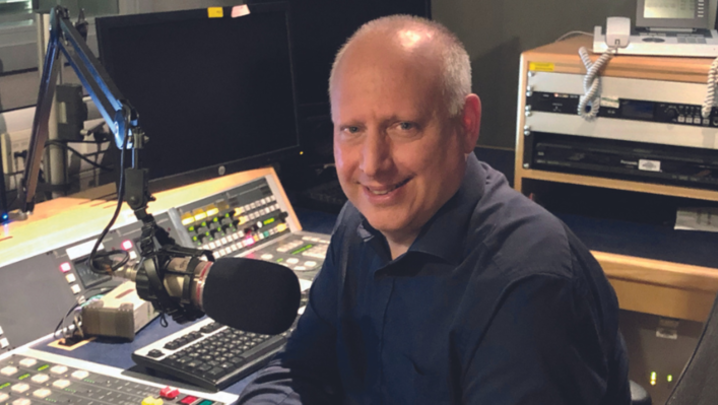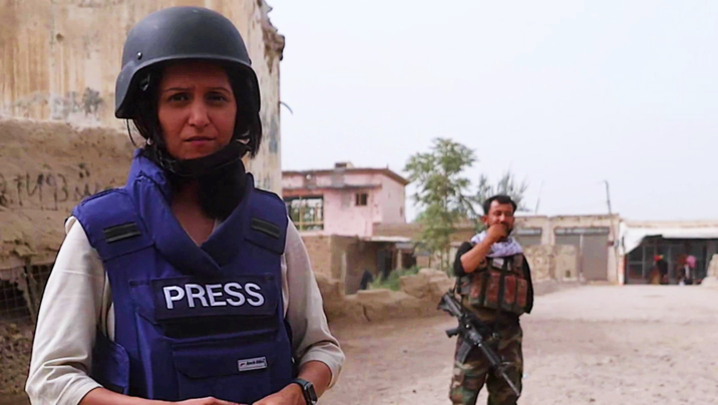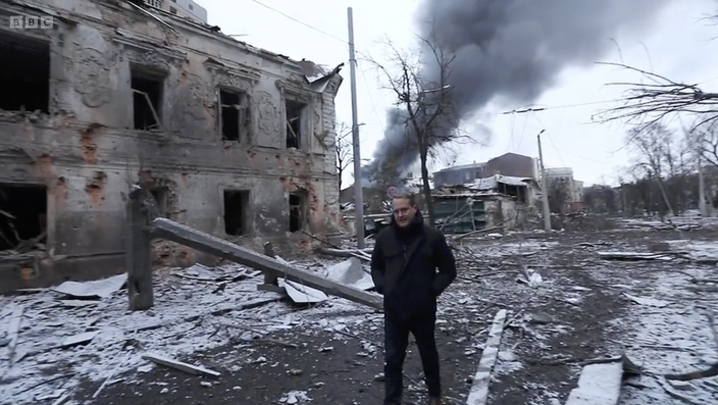As the Ukraine conflict reaches its 18-month mark, Simon Bucks talks to leading figures in news about how TV war reporting has been transformed
If we ever needed reminding that truth is the first casualty of war the conflict in Ukraine has supplied an abundance of misinformation and propaganda. War has also, wrote the historian AJP Taylor, just as reliably been the mother of invention for everything from battlefield hardware to advances in conflict journalism.
The evolution of war reporting can be traced from William Howard Russell’s pioneering dispatches from Crimea for The Times to the use of the telegraph in the Franco-Prussian war, photographs and film in the First World War, on-the-spot radio broadcasts in the Second World War, television in Vietnam and rolling TV news in the Gulf wars, the Balkans and Afghanistan.
Now, Ukraine has added another milestone: Europe’s first full-scale phone and drone-camera war. Paradoxically, an old-style trench and artillery conflict has been dubbed “the first TikTok war”.
“When I was first in the business, the coverage of anything was dependent on a camera crew getting there, so it was typically aftermath,” says Jonathan Levy, Managing Director and Executive Editor at Sky News. “Now, your primary source of pictures of something happening is going to be someone recording it on their phone.”
News bosses know that, while some combat video shot on camera phones comes from individuals at the scene, in Ukraine much is posted as propaganda by military and government agencies, Ukrainian as well as Russian.
"Open-source journalism is CRUCIAL now. You couldn't run a newsroom without it"
“No one should approach any conflict thinking that, just because right is apparently on one side or another, they are therefore telling the truth. It doesn’t suit anyone to tell the whole truth all the time,” says Jonathan Munro, the BBC’s Deputy Director of News. “So, reaching firm conclusions about what’s factually accurate is difficult. The key is to be honest with the audience about what we don’t know.”
“The Ukrainian government is extremely good at propaganda – as it should be, that’s its job, any government at war has to be good at it,” notes Lindsey Hilsum, the veteran Channel 4 News International Editor, who has reported extensively from Ukraine.
“We use that footage if we’re not there. But you have to be very careful because, of course, if a Ukrainian unit has a bad day and loses a lot of people, it is not going to put out footage showing that. [Forces] put out footage that shows them having a good day.”
“You find yourself publishing material by people who you wouldn’t want to meet in real life,” adds Mark Evans, Head of News at Enex, an association of the world’s leading commercial TV news broadcasters. He cites the controversial Ukrainian Azov Brigade, a unit with many right-wing extremists, and, reputedly, a rich source of propaganda footage. “But, from a journalistic perspective, once you have satisfied yourself that something is genuinely what it says it is, it kind of doesn’t matter.”
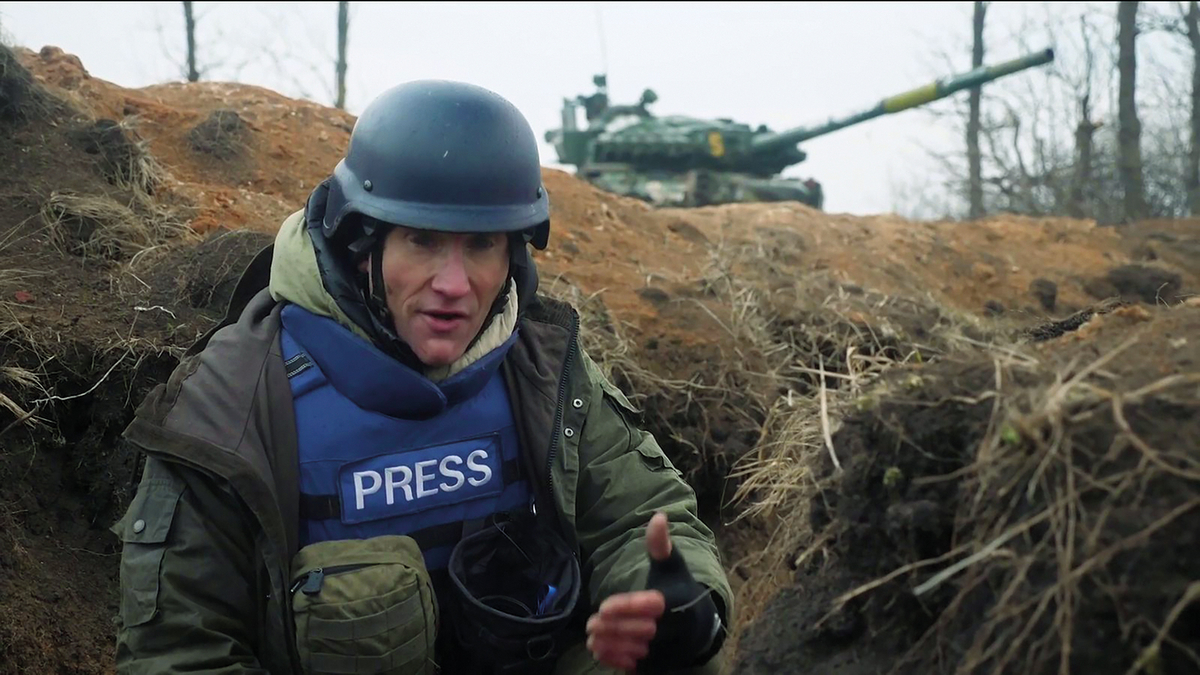
(Credit: Sky)
The tricky business of distinguishing real footage from disinformation has driven the rapid development of Osint, (open-source intelligence), the science of figuring out whether a video is what it claims to be. It’s done by scouring databases, analysing metadata and matching skylines, backgrounds and terrain from genuine imagery, such as Google Earth.
“You need really sharp tools and clever people to make sure that the video that’s floating around is not fake,” says Levy. “Open-source journalism is crucial now. You couldn’t run a newsroom without it.”
“Open-source journalism is something that we’re leaning into and the war was a catalyst for that,” agrees Andrew Dagnell, the Editor of ITV News. He argues that every journalist should have Osint skills. “It’s going to become more and more important in our day-to-day work.”
Most UK newsrooms have Osint units, with much of their work focused on Ukraine war video. Only the BBC has given theirs a public brand name – Verify – and, with 60 people, it’s no small enterprise.
“I have a problem with the phrase ‘citizen journalists’, because they’re not journalists, but people who gather evidence on social media,” says the BBC’s Munro. “But the space in which social media video sits is [vast] and growing. More and more of the world’s population can do this sort of stuff. If the BBC brand stands for anything, it’s the pursuit of truth, and that means redoubling our efforts to verify, to check, to confirm.”
News chiefs agree that this proliferation of social video is no substitute for their own correspondents’ first-hand reports. All continue to dispatch people to the front line and their brave teams produce memorable pieces. The BBC maintains a permanent Kyiv bureau.
As the war reaches its 18-month mark, newsrooms have retreated from their initial blanket coverage, settling into a less frenetic rhythm. Despite that, broadcasters say that reporting Ukraine has, in some ways, become even harder.
Most boosted their security arrangements after Sky News’s Stuart Ramsay was wounded by gunfire when his team was attacked near Kyiv in March last year, and two Fox News journalists were killed a few days later. “After that, the security concerns got bigger,” says Rob Hodge, Deputy Foreign Editor of Channel 4 News. “We had to have two armoured cars to carry all of us plus a security adviser and a local journalist. It all makes sense from a safety perspective, but it adds to the logistics.”
Apart from the problems of getting around a vast country during a war, reporters say it has become more difficult to access the action. The Russians virtually never allow Western journalists to see their operations, and the Ukrainians have become more restrictive.
“At the beginning it was quite anarchic,” says the vastly experienced recipient of multiple RTS awards Alex Crawford, Special Correspondent at Sky News. “The Ukrainians were very much in flux, President Zelensky was living behind sandbags in his office. No one had quite got a handle on where all the journalists were, what they were doing, where they were going. Now, you have to have a press officer with you and, if you are minded to do without one, they’ll threaten to take away your accreditation or your fixer’s.”
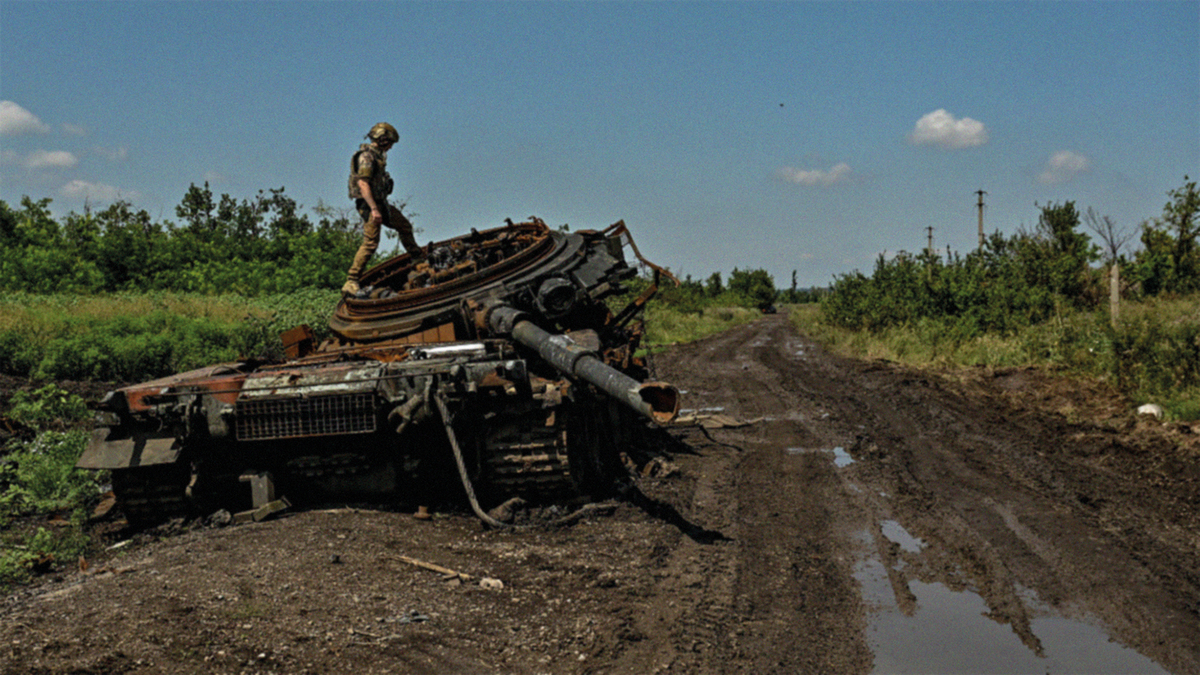
As in all wars, reliable facts are hard to come by. Neither side reveals its casualty figures, so journalists have developed their own methods to establish them. Hilsum at Channel 4 News has used the simple device of counting fresh graves flying flags to indicate dead soldiers. The BBC and ITN have employed satellite imagery, and Sky’s Crawford worked with a forensic team using 3D scanners to recreate war crimes.
As an aside, Hilsum volunteers that her local producer has a winning formula for negotiating Ukrainian checkpoints. “She says I’m a very famous journalist. Not true, but anyway…. second, I was a friend of the Queen. And third, and this is always a clincher for some reason, I saw Gaddafi’s body with my own eyes.”
Hilsum says Ukraine is one of the few stories she has covered where being British helps, thanks to the UK Government’s continuing support for Ukraine’s war effort.
Helpful perhaps, but it raises a critical question for journalists. The former BBC reporter John Sweeney told NewsXchange recently: “There is no place for impartiality in coverage of Russia’s war on Ukraine.”
British public support for Ukraine has stayed consistently high, around 80% according to YouGov, although a fair number of countries remain neutral or disinterested.
On Russia’s border, by contrast, the situation is clear cut. “It’s a very common feeling that it could have been us,” explains Mika Mäkeläinen, a Finnish TV reporter. “There’s absolutely no question that Russia is entirely to blame, so it’s difficult for us to relate objectively to the situation.
"The key is to be honest with the audience about what we don't know"
“There’s a consensus that we can’t allow Russia to win: it would just embolden a dictatorship that would be a continuous threat to other democracies in Europe. We have a moral obligation to support Ukraine.”
For British broadcasters, bound by regulation, it’s more complicated. “Our responsibility is for due impartiality,” says the BBC’s Munro. “What is the level of impartiality that is relevant to a circumstance or situation? If one country invades another country, our job is not to be balanced in a 50-50 way.”
When the Nova Kakhovka dam was blown up, Munro says many Ukrainians thought the BBC was too impartial: “It’s quite unlikely that the Russian account was true, but no BBC journalist or third-party source witnessed it. So, our job was to say why we didn’t think Russian claims were likely to be true.”
“We try, where possible, to cover atrocities on both sides,” confirms ITV News’s Dagnell. “But you’ve always got to be mindful of the war’s origins, the politics that started it. So, it’s very nuanced.”
“It’s not about saying one side is as bad or good as the other,” adds Levy at Sky. “But, if you’re witnessing a column of Russian tanks rolling towards Kyiv, as in the early days of the war, you show people that and it completely counters the Russian argument that it wasn’t an invasion.”
“It is a question I have asked myself,” admits Hilsum at Channel 4 News. “And maybe that’s the most important thing: to keep asking ourselves that question. And to try to make sure that we’re telling the truth about a war of aggression, where there is a clear aggressor, and there is a clear victim.”
Mäkeläinen says the existential threat posed by Russia makes it very easy to keep his viewers interested. Is the UK still equally hungry for Ukraine news? Absolutely, confirms Channel 4 News’s Rob Hodge: when something big happens, all news outlets see a spike in audience figures.
But, with the fighting grinding on, budgets straining and other big stories demanding coverage, editors agree that – while they remain committed to reporting Ukraine – they have become more selective about when and where to deploy. So, barring a dramatic turn of events, prepare to see fewer first-hand reports and more phone-camera footage.

